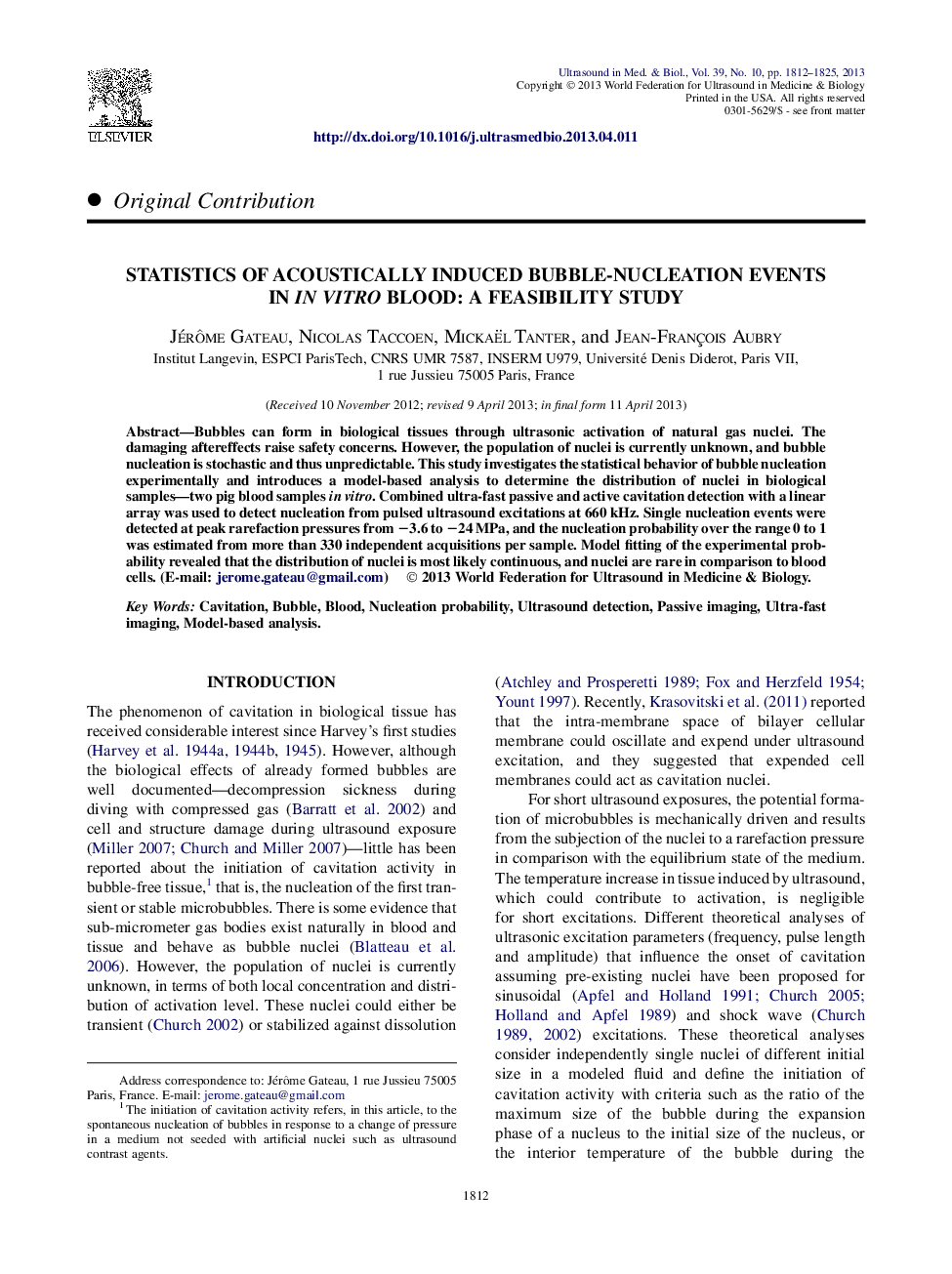| Article ID | Journal | Published Year | Pages | File Type |
|---|---|---|---|---|
| 1760805 | Ultrasound in Medicine & Biology | 2013 | 14 Pages |
Abstract
Bubbles can form in biological tissues through ultrasonic activation of natural gas nuclei. The damaging aftereffects raise safety concerns. However, the population of nuclei is currently unknown, and bubble nucleation is stochastic and thus unpredictable. This study investigates the statistical behavior of bubble nucleation experimentally and introduces a model-based analysis to determine the distribution of nuclei in biological samples-two pig blood samples in vitro. Combined ultra-fast passive and active cavitation detection with a linear array was used to detect nucleation from pulsed ultrasound excitations at 660 kHz. Single nucleation events were detected at peak rarefaction pressures from â3.6 to â24 MPa, and the nucleation probability over the range 0 to 1 was estimated from more than 330 independent acquisitions per sample. Model fitting of the experimental probability revealed that the distribution of nuclei is most likely continuous, and nuclei are rare in comparison to blood cells.
Related Topics
Physical Sciences and Engineering
Physics and Astronomy
Acoustics and Ultrasonics
Authors
Jérôme Gateau, Nicolas Taccoen, Mickaël Tanter, Jean-François Aubry,
